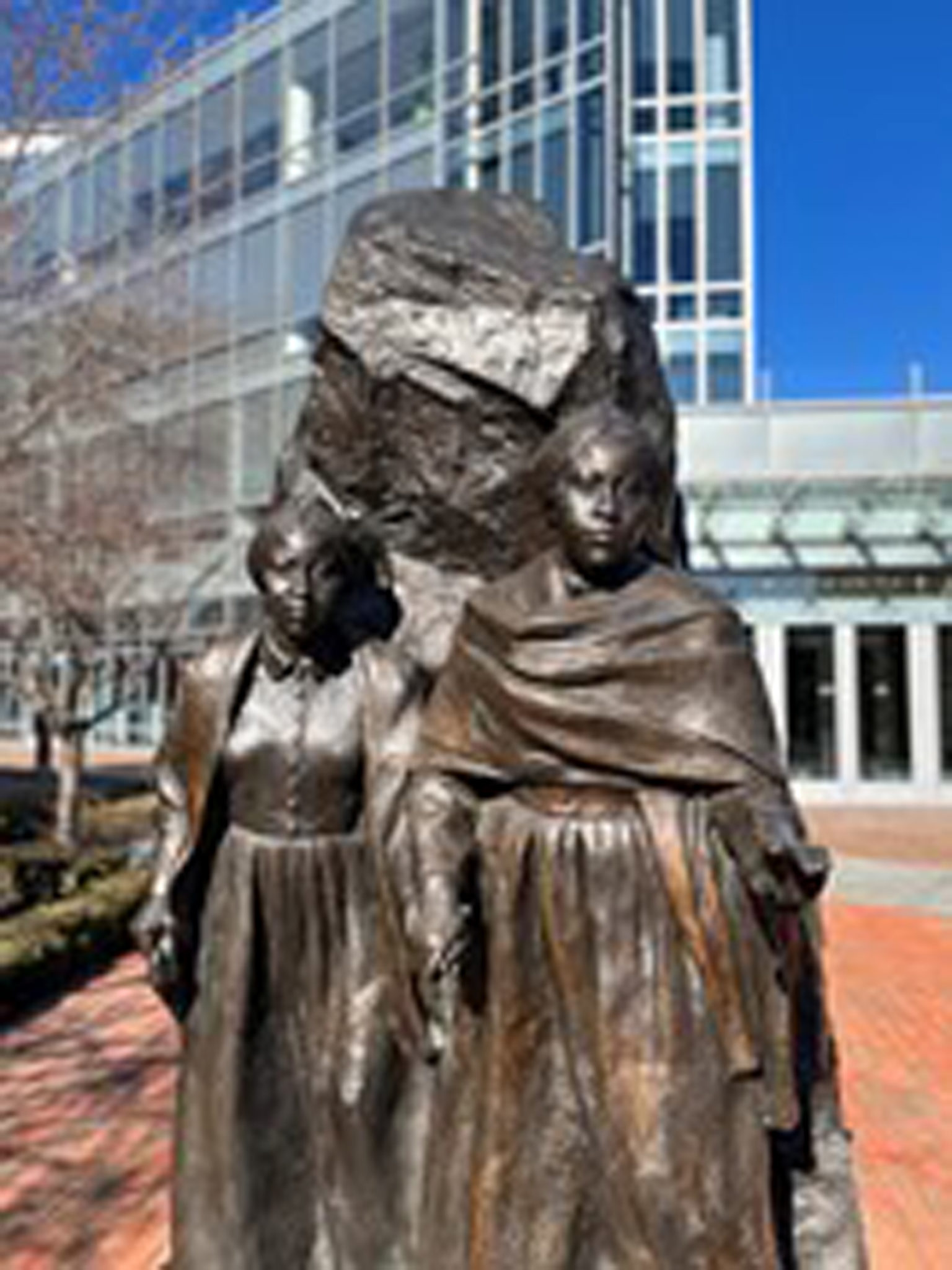The Edmonson Sisters: A Triumph of the Human Spirit

By Rochelle S. Hall
Alexandria, VA – “The Edmonson Sisters” is a 10-foot bronze statue of two inspiring 19th Century Black women standing in front of a 21st Century office building at 1701 Duke Street.
Emily and Mary Edmonson were the daughters of Paul Edmonson, a formerly enslaved man, and Amelia, an enslaved woman. On the night of April 15, 1848, Emily, 13, Mary, 15, and their four older brothers walked through the dark Washington, D.C. streets to the waterfront. They were among 77 enslaved people escaping to freedom aboard the Pearl, which was bound for Philadelphia. But because of stormy weather, the ship stalled overnight at the mouth of the Chesapeake.
When morning dawned, multiple slaveholders discovered their “property” missing and sent a steamboat of armed men to find the escapees. They captured the Pearl and brought it back to Alexandria. The six Edmonson siblings were bought by the Alexandria slave dealer Joseph Bruin. Bruin used his property at 1707 Duke Street and two acres behind it as a slave jail where he held Blacks before selling them, primarily to slaveholders in the Deep South.
Bruin placed the Edmonson sisters on the Union, a ship headed to a market in New Orleans, where there was a brisk demand for “fancy girls,” a euphemism for “sex slaves.” Because they were young and beautiful, Bruin set a high price for the girls—$1,200 each. But after they arrived in New Orleans, an outbreak of yellow fever forced Bruin to bring the sisters back to Alexandria.
Paul Edmonson traveled north to raise funds to secure freedom for his daughters. He eventually met Henry Ward Beecher, the prominent abolitionist and pastor of the Plymouth Congregational Church in Brooklyn, an important station on the Underground Railroad. After hearing the plight of the Edmonson sisters, Beecher’s congregation contributed the needed money.
The sisters were freed in November 1848, seven months after boarding the Pearl. Beecher’s sister Harriet Beecher Stowe later based part of her 1852 novel Uncle Tom’s Cabin on Bruin’s jail. In her 1853 nonfiction book, A Key to Uncle Tom’s Cabin, Stowe described the Edmonson family and other enslaved people’s attempt to escape on the Pearl, their capture, and the return to Bruin’s “large warehouse for enslaved people.”
With the support of the Beechers, Emily and Mary moved to New York, where they attended high school and, together with Frederick Douglass and others, fought to abolish the institution of slavery. They also worked for years with their father to secure the freedom of their brothers. Stowe paid for the sisters to attend Oberlin College in Ohio. Shortly after arriving, Mary, age 20, died from tuberculosis on May 18, 1853.
Grief-stricken, Emily returned to her family in Washington, where she taught at Miner Normal School for Black women (now the University of the District of Columbia) and continued her abolitionist work. In 1860, Emily married Larkin Johnson and bore four children. She and her husband purchased land and became founding members of the Hillsdale community in Anacostia. Emily died on September 15, 1895, at age 60.
In 2010, Carr Properties commissioned a public artwork and plaza in front of its building, where Bruin’s slave jail once stood. In its announcement of the dedication, the city said, “Sculptor Erik Blome created ‘The Edmonson Sisters’ to commemorate their lives and those of others who were enslaved at the Bruin Slave Jail’… ‘The Edmonson Sisters’ honors the lives destroyed by enslavement while celebrating the triumph of the human spirit.”
Rochelle S. Hall is a Commissioner with the Alexandria Commission for Women
ICYMI: Alexandria Celebrating Women’s History Month in March




